5. Santa Sangre (Alejandro Jodorowsky, 1989)
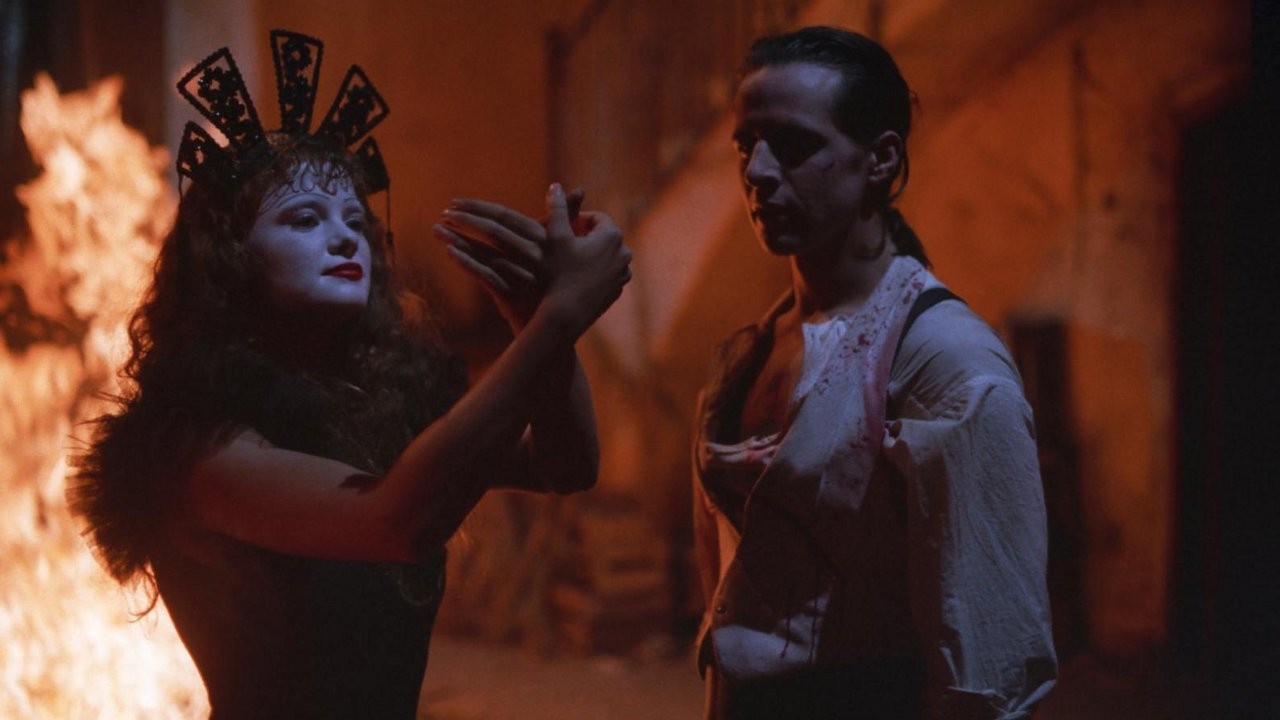
It is unsurprising that when Jodorowsky, the man who brought us The Holy Mountain, ventured into the horror genre that he produced one of the most effectively surreal horror films of all-time. In contrast to a few other films on this list that sound normal in premise and are made bizarre in practice, Santa Sangre sounds strange from the script and is almost impossible to synopsise succinctly.
It follows Fenix from his time as a child magician in a circus, where he witnesses the brutal butchery of his religiously fanatical mother at the hands of the ringmaster, to his time in a mental institute as an adult which he ultimately escapes from to team up with his armless mother. Together the pair create a theatre production in which Fenix takes the place of his mother’s arms. However, as Fenix continues to substitute his arms in place of his mother’s, she begins to exert increasing influence over how they are used, to murderous effect. Abounding with Oedipal undertones, Fenix and his mother’s relationship are not dissimilar to Norman Bates’ and his overbearing mother; however, where Psycho’s mother proclaims to be harmless and “would never hurt a fly”, Sangre’s mother is armless and never proclaims to be gentle.
Santa Sangre is filled with fascinatingly outlandish characters and settings that, at times, you have to remind yourself of how surreal they really are as they become so normal in the world of the film. The number of amazing characters in the film are countless: Fenix’s maniacally religious mother of a fictional religion that worships an armless saint; a seductive femme fatale covered in jungle tattoos; a brutal, domineering ringmaster that is led astray from Fenix’s mother by the vivacious jungle-lady that leads the first of the film to a corrosive climax and, of course, Fenix himself, who is a timid young man who lives in a tree while in the captivity of the asylum and becomes obsessed with the invisible man once he has escaped.
As the film develops and Fenix’s mental state deteriorates under the stress of his mother’s murderous impulses, the settings become increasingly expressionistic and surreal as Fenix’s home turns into a twisted coven straight out of The Cabinet of Dr Caligari and the graveyard that he buries his and his mother’s victims in are filled with naked bridal ghosts that ethereally reach out and beckon for him.
However, Santa Sangre is as sad as it is scary as genuine sympathy is created for Fenix as you understand that he is a victim of the circumstances of his horrific childhood. Similarly, there is the tragic figure of Fenix’s childhood friend, a young, innocent mime girl who is abused by the tattooed lady and later prostituted out by her. The pair are reunited in Santa Sangre’s finale that is as melancholic as it is macabre and may even cause you to shed a few tears.
4. Society (Brian Yuzna, 1989)
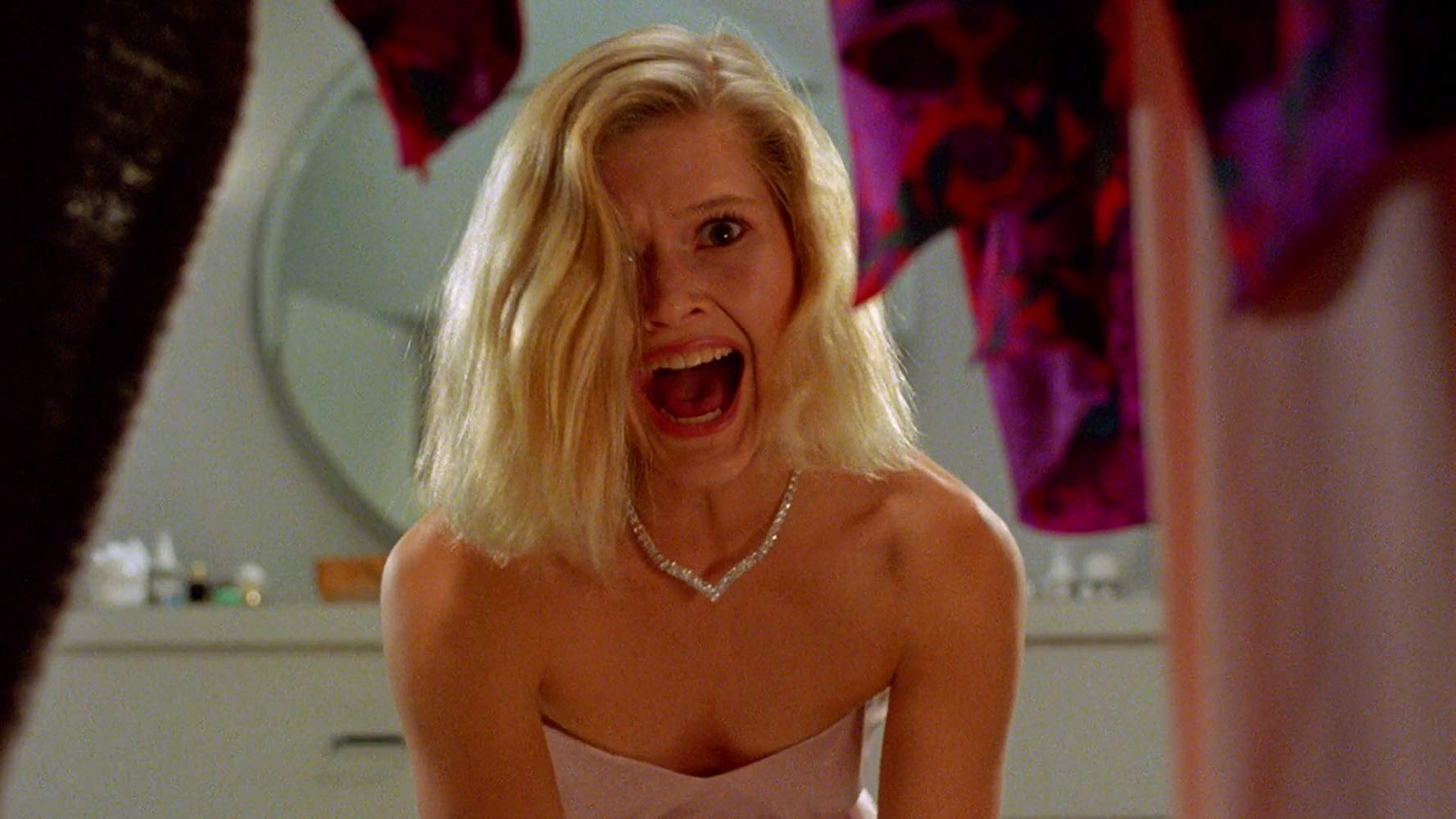
When a film is titled Society, you know its allegory isn’t going to beat around the bush and Brian Yuzna does not disappoint. Society hypothesises that the rich, upstanding upper-class citizens of Beverly Hills are all actually incestual, sadistic, perverted aliens that exploit and play with the poor as part of a secret sex cult that makes Eyes Wide Shut appear PG. Unsurprisingly, for the man who produced Re-Animator and From Beyond, Yuzna produces some of the most sickening examples of body horror imaginable as chains of bodies interconnect and leach off one another like a spider’s web of flesh. Preceding the idea of the 2020 Academy Award Best Picture winner, Society approaches the idea of the rich as parasites in a very literal way.
Society’s story follows Bill Whitney (Billy Warlock), the adopted son of an upper-class family who slowly starts to uncover the perverted sex ring behind the rich and powerful, of which his family are a key part. At first playing on the themes of conspiracy and paranoia, Society bursts open in the final act as the now not-so-secret cult are revealed in all of their disgusting glory. The scene when Bill walks in on his mother, father and sister in a position that would send even Oedipus into therapy will make you thankful that you never grew up rich. Society’s finale culminates in a one-on-one fight between Bill and the arrogant, smarmy Ferguson which will somehow simultaneously make every orifice of your body wince but leave you completely satisfied.
A character that can’t go without mention is the mother of love interest Clarissa; a large, grunting woman whose only interest seems to be eating hair and who later teams up with Bill’s best friend to become a weirdly wholesome investigative duo. Make of her what you will. Happy Shunting!
3. House (Nobuhiko Obayashi, 1977)
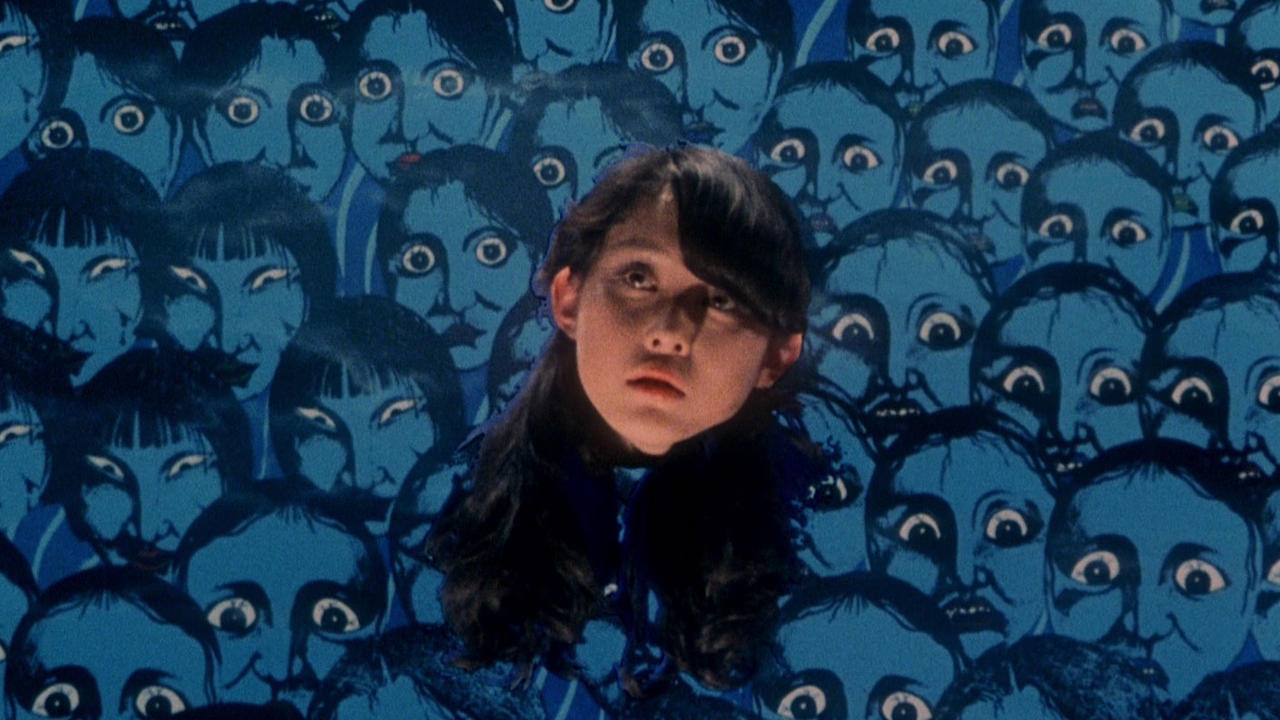
On the face of it, House’s narrative sounds fairly conventional. Six teenage girls go to the country to visit one of their aunts. As events unfold, it transpires that the old house and sweet old lady are not as innocent as they first appear. Strange for real life but nothing out of the ordinary for a horror film.
However, Obayashi decided to spice up this story by including set-pieces described from his daughter’s childhood nightmares, stating that adults only think about things on a comprehensible, “boring human level” while children “can come up with things that can’t be explained”. Obayashi’s consultation with his daughter evidently produced enough fantastic ideas as House holds a carnivorous piano, a decapitated head biting a girl on the bum, an attack from a gang of futons and a groovy skeleton that just wants to dance. House twins unsettling and gruesome imagery with an oneiric, adolescent naivety in which the sky is always a dreamy blend of orange and purple and the characters never lose their childlike wonder. Well, except one.
Culminating in a blood-filled ending that is completely bananas (quite literally), House has become a cult-classic among both the horror community and fans of Japanese culture alike as it’s cartoonish visuals and madcap events are reminiscent of some of the craziest anime which similarly blend darkness and violence with a certain joviality and playfulness to create a kaleidoscope of tones. House never takes itself too seriously equal parts comedy and horror with dashes of kung-fu, animation and bildungsroman.
This insane narrative is complimented by Obayashi’s apparent determination to use deploy every stylistic choice possible, relentlessly unleashing zooms, freeze frames and 360 rotations on the audience to name but a few. House is a rollercoaster that crashes the spectator through its runtime, not asking anyone to understand its insanity but just to hold on and enjoy the ride.
2. Videodrome (David Cronenberg, 1983)
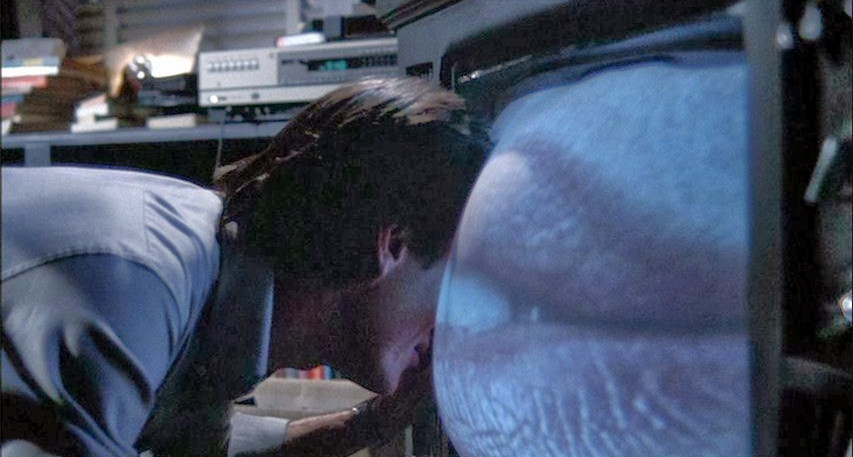
The undisputed King of Body Horror, David Cronenberg followed up the likes of his low-budget cult classics Shivers, Rabid and Scanners with Videodrome, his highest budgeted film to date. Despite being a box-office flop at the time, Videodrome has survived to become one of the most celebrated cult horror films of all time, known for its gut-wrenching special effects and its casting of 70’s and 80’s Rockstar Debbie Harry. The film follows Max Renn (James Woods), the CEO of a small pornographic television station who stumbles upon an illegal television frequency broadcasting a show named Videodrome that exhibits extreme, realistic violence and torture. As Renn begins to unravel the mystery behind this broadcast, he begins to experience increasingly strong and disturbing hallucinations.
Videodrome is infamous for its depiction of bizarre body horror that occurs during Renn’s hallucinations. Scenes of Renn inserting the Videodrome VHS into a wound in his stomach and the melding of a gun into his flesh to create the most literal realisation of a “hand gun” have been burned into the retinas of many a horror audience over the last four decades and will continue to do so well into the future. Already known for his extreme violence and special effects, in particular an iconic scene from Scanners that will not be spoiled here, Cronenberg is not tamed by his increased budget and Hollywood backing as he creates some of his most disturbing and gory imagery to date in a film that could never be replicated.
Moreover, Videodrome is not only a sickening feast for the eyes but also is an examination of the effect of extreme media on society, while also in itself being an example of such media. Renn describes the Videodrome frequency as containing very realistic torture and murder with virtually no plot, which may sound like a criticism but actually makes him desperate to be able to broadcast it on his channel.
Videodrome plays on the notion that we live in overstimulated times as Renn needs to escalate the severity of his brutal and exploitative content to satisfy a desensitised audience. This is all the more significant today as since the advent of the internet the sort of content that is broadcast on Videodrome actually seems somewhat naïve and is disturbingly accessible today to almost anyone. Luckily, however, this content that we can easily access digitally does not cause brain tumours that result in violent hallucinations and the evolving of victims into a new species of human. . . that we know of.
Videodrome is a tour de force of extreme imagery and content and pushed the boundaries of what was acceptable to be broadcast on the silver screen. However, despite this, the most unbelievable and shocking thing included throughout the whole of the film is the idea that a woman like Debbie Harry would ever be interested in a man like James Woods, whether in real life or in fiction. There are some boundaries that you just do not push.
1. The Evil Dead 2 (Sam Raimi, 1987)
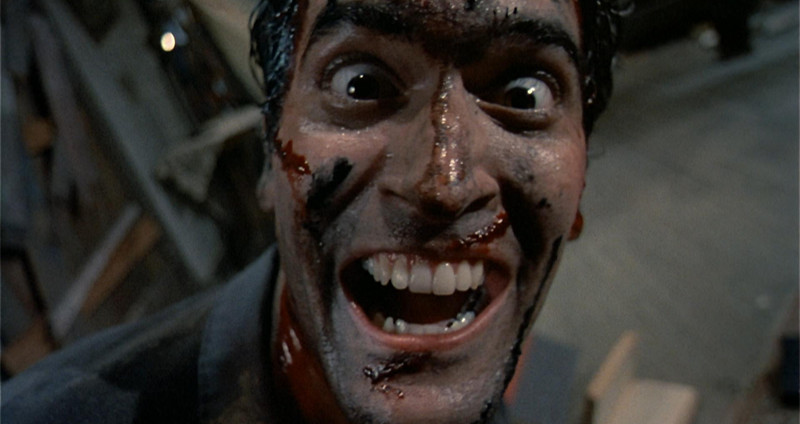
Arguably the most famous and revered film on this list, Sam Raimi’s follow-up to his 1981 cult-smash Evil Dead defied expectations of what could be done with both a sequel and the horror genre. With a wildly increased budget and even higher expectations, Raimi could have easily played Evil Dead 2 safely and produced a logical sequel, perhaps following Ash years later after the trauma of the events of the first film or following a whole new group of young adults altogether. However, Raimi scraps all narrative conventionality as Evil Dead 2 begins by reimagining the events of the first film in a fast opening in which Ash and his girlfriend, Linda, retreat to the same log cabin in the woods.
There they find a voice recording from the archaeologist owner of the house reciting chants from the “Book of the Dead” which resurrects an evil spirit that quickly possess Linda. Ash battles Linda and, in the end, the opening finishes with the same shot as the first film ends in the point-of-view of the demon heading straight towards a screaming Ash.
Now this is where things start to get really weird. Evil Dead 2 descends into a state of delirium as Ash watches his resurrected girlfriend perform a playful Danse Macabre, plays the deadliest game of “Why are you hitting yourself?” with his own disembodied hand and includes the second biting of a decapitated head included on this list. Raimi creates the sweaty atmosphere of a fever dream in which every time you are sure you have awoken from it, something even more crazy happens to remind you that you are still not safe yet. Evil Dead 2 heightens the dark, silly sense of humour of the first as Ash and his hand create a cartoonishly violent double act and, despite numerous beheadings, the evil spirits retain their foul mouth.
Evil Dead 2 contains some of the most famous parts of the Evil Dead franchise, and the horror genre as a whole, including Ash’s groovy chainsaw arm and the air-punchingly cool line “Swallow This” before shooting a demon in the face. Evil Dead 2 ends by setting up its sequel, Army of Darkness, as Ash finally escapes from the cabin in the woods but to a time and a place a whole lot more bizarre.